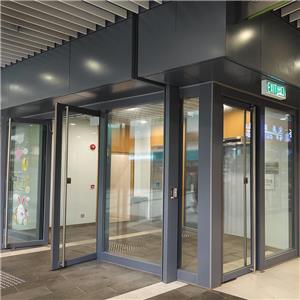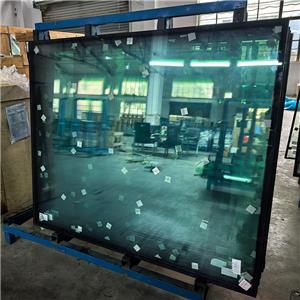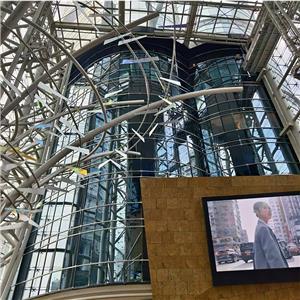-
1.Fire testing can take various forms
consignment test – the tested specimen is fabricated as per the design of specific project or element, therefore, the test report is only applicable for the specified project or element. sampling test – the test report is universal for fire protection projects. Fire testing can take various forms, including: 1. UL 10C Standard Test Method for Fire Tests of Glass Panels in Building Fire Exposure 2. ASTM E119 Standard Test Method for Fire Tests of Building Construction Products 3. NFPA 25-1999 Standard on Fire Tests of Building Construction Products 4. EN 1634 Series (European standards) for Fire Tests of Glazing Systems 5. BS 6266 Fire Tests of Glazing in Buildings 6. SNF P21 (Swiss Norm) for Fire Resistance of Construction Products 7. Japanese Industrial Standard JIS A 1442 for Fire Resistance of Glass These tests assess a material's resistance to heat transmission, smoke development, and structural integrity during exposure to controlled fire conditions.
-
2.Where is fire-resistant glass used?
Fire-resistant glass, also known as anti-fire glass, finds extensive applications in various industries due to its unique properties that allow it to resist heat and flames, thus providing essential fire safety. Here's a brief overview of some common places where this type of glass is used: 1. Residential Buildings: In high-rise apartments and homes, fire-resistant glass is incorporated into partition walls, windows, and doors to create fire compartments and limit fire spread, protecting occupants. 2. Commercial Spaces: Office buildings, malls, and hotels often use fire-rated glazing in corridors, stairwells, and emergency exit windows to maintain structural integrity and prevent fire from becoming a life-threatening hazard. 3. Public Transportation: Train stations, airports, and buses feature bulletproof or fire-resistant glass to protect passengers and ensure safety during emergencies. 4. Institutes & Laboratories: Laboratories, where flammable materials are stored, utilize this glass to contain fires and protect researchers from thermal hazards. 5. Fire Doors: Fire-rated glass doors provide an escape route while maintaining fire barriers, allowing for controlled evacuation. 6. Banks & ATMs: To secure transactions and protect against fire damage, many banks install fire-resistant glass partitions and deposit boxes. 7. Exhibition Halls: Trade shows and events require temporary partitions that can withstand short-term exposure to fire, ensuring the safety of attendees and exhibitors. 8. Museums & Heritage Sites: For the protection of valuable artifacts and collections, fire-resistant glass helps safeguard them from potential fire incidents. Overall, fire-resistant glass plays a crucial role in fire safety planning by reducing the spread of flames and smoke, enabling efficient evacuation, and preserving structures during emergency situations.
-
3.How long can fire-resistant glass prevent fire?
The duration for which fire-resistant glass like EI30, EI60, and EI120 can resist fire varies based on their respective European standard classifications. EI30: This grade offers a standard fire resistance period of approximately 30 minutes. During this time, the glass maintains its integrity, limiting the transmission of heat and flames, allowing for a safe evacuation of people and slowing down the spread of fire within the building. EI60: An EI60-rated glass provides significantly more resistance. It can withstand fire conditions for up to 60 minutes. The higher rating means the glass maintains its structural strength longer, creating a safer barrier between rooms or zones, giving ample time for firefighters to arrive and extinguish the flames. EI120: As the name suggests, EI120 glass boasts the longest-lasting fire resistance of all three, lasting up to 120 minutes. This type of glass is typically used in critical applications where extended periods of fire resistance are required, such as in commercial buildings with multiple floors or those housing sensitive equipment. It's important to note that these ratings are based on tests that evaluate not only the resistance to heat but also the ability to self-extinguish when subjected to high temperatures. The choice of fire-resistant glass depends on the specific fire scenario and the level of protection needed in each application. In all cases, the main objective is to minimize damage, protect lives, and facilitate a controlled evacuation process.
-
4.How to calculate the thickness of fireproof glass?
Fire-resistant glass thickness calculation is governed by several factors, primarily related to the required fire resistance time and the type of performance standard. The thickness generally increases with the desired level of protection. Fire Resistance Rating (FRR): The first step is understanding the fire resistance requirement, which is denoted by codes like EI30, EI60, or EI120. A higher number indicates a longer duration of protection against heat and flames. Standard Test Conditions: Fire-resistant glass undergoes standardized tests, like ASTM E119 or EN 16001, which define the conditions under which the glass must maintain its integrity. These tests include exposure to intense heat and radiant energy. Heat Transmission: Thicker glass is less susceptible to heat transmission. The rate of temperature rise inside the protected area is reduced, providing more time for evacuation. Strength Requirements: The glass needs to be structurally sound to withstand the thermal stress generated during a fire. Thicker glass ensures it can maintain its shape and resist collapse, even at high temperatures. Insulation and Soundproofing: Depending on the application, thicker glass may also provide better insulation against heat and noise. In summary, engineers and designers use a combination of fire resistance standards, test results, and specific building requirements to determine the optimal thickness of fire-resistant glass for a given project. It is a crucial aspect of fire safety planning, striking a balance between protection and aesthetics.




